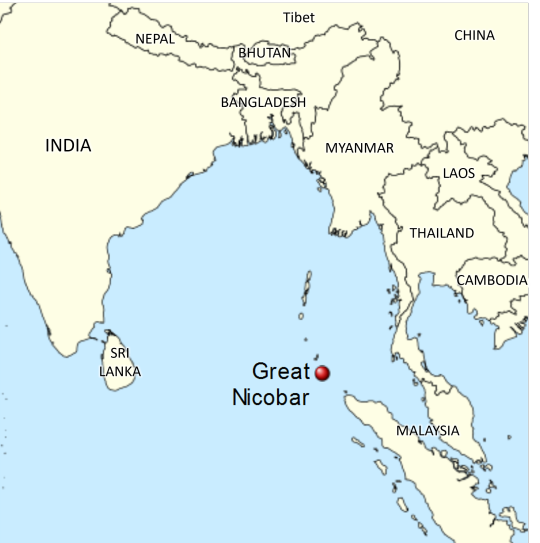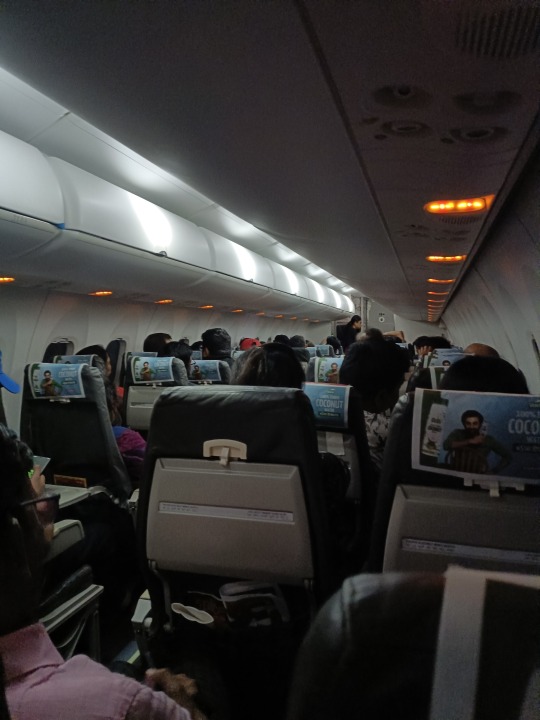#industrial relations India
Explore tagged Tumblr posts
Text
Tata Steel Signs Wage Revision Agreement for Jharia, West Bokaro
7-year settlement includes pay hikes, allowance revisions for over 4,000 workers The agreement, effective from July 2022 to June 2029, covers wage revisions and benefits for colliery workers in Jharia and West Bokaro. JAMSHEDPUR – Tata Steel has inked a fresh wage revision pact with the Rashtriya Colliery Mazdoor Union for employees at its Jharia and West Bokaro collieries. The memorandum of…
#बिजनेस#business#coal mining workforce#colliery workers pay hike#industrial relations India#Jharia West Bokaro collieries#labor union agreement#mining sector allowances#mining sector wages#Rashtriya Colliery Mazdoor Union#Tata Steel employee benefits#Tata Steel wage revision
0 notes
Text
Maldives President Urges Indian Tourists After Diplomatic Shift
In a diplomatic shift, the Maldives President appeals to Indian tourists, emphasizing the importance of Indian visitors for the country's tourism sector.
#Maldives tourism appeal#Diplomatic relations between India and Maldives#Indian travel to Maldives#Maldives President’s announcement#Maldives tourism industry#Maldives tourism#Indian tourists#Diplomatic shift Maldives
0 notes
Text
Best CRM Software in India for Maximum Business Growth

Looking for the best CRM software in India to accelerate the growth of your company? For you, Intileo Technologies provides the ideal answer! You may track sales, manage customer connections, and enhance client communication with the help of our CRM software. It's intended to simplify and enhance the effectiveness of your company's operations, enabling you to expand more quickly. Our CRM software is designed to fit your demands, regardless of the size of your company. It's the best way to keep ahead of the competition with features like lead management, sales tracking, and customer assistance. The best CRM software in India is provided by Intileo Technologies, guaranteeing maximum business success and growth.
#customer relation management#crm management software#real estate crm software#marketing crm#crm software india#crm for travel industry#best crm software in india#best crm software for small business#best crm in india#crm company in india#crm for schools#insurance crm software#logistics crm#crm for ecommerce#crm for travel companies#crm for retail#education crm software#crm for marketing agencies#best crm for manufacturing business#retail crm software
0 notes
Text
The Hindu Morning Digest: August 29, 2024
Union Labour and Employment Minister Mansukh Mandaviya holds a meeting with trade union members on the proposed employment-linked incentive (ELI) scheme, on Wednesday (August 28, 2024). | Photo Credit: ANI Telegram founder-CEO Pavel Durov charged, banned from leaving France France on Wednesday (August 28, 2024) charged Pavel Durov, the founder and chief of Telegram, with a litany of violations…
#2024#bengal bandh#brij bhushan trial#Donald Trump assassination attempt#FBI#haryana campaign video#india russia relations#jharkhand politics#kerala film industry#labour laws#nda rajya sabha#news digest#Paris Paralympics 2024 opening ceremony#Pavel Durov banned from leaving France#Pavel Durov charged#railway projects#russia ukrain war#SIG716 assault rifles#spying on champai soren#The Hindu Morning Digest: August 29#Thomas Crooks searched for rallies by Trump and Biden#trade unions
0 notes
Text
Genocide experts warn that India is about to genocide the Shompen people
Who are the Shompen?
The Shompen are an indigenous culture that lives in the Great Nicobar Island, which is nowadays owned by India. The Shompen and their ancestors are believed to have been living in this island for around 10,000 years. Like other tribes in the nearby islands, the Shompen are isolated from the rest of the world, as they chose to be left alone, with the exception of a few members who occasionally take part in exchanges with foreigners and go on quarantine before returning to their tribe. There are between 100 and 400 Shompen people, who are hunter-gatherers and nomadic agricultors and rely on their island's rainforest for survival.

Why is there risk of genocide?
India has announced a huge construction mega-project that will completely change the Great Nicobar Island to turn it into "the Hong Kong of India".
Nowadays, the island has 8,500 inhabitants, and over 95% of its surface is made up of national parks, protected forests and tribal reserve areas. Much of the island is covered by the Great Nicobar Biosphere Reserve, described by UNESCO as covering “unique and threatened tropical evergreen forest ecosystems. It is home to very rich ecosystems, including 650 species of angiosperms, ferns, gymnosperms, and bryophytes, among others. In terms of fauna, there are over 1800 species, some of which are endemic to this area. It has one of the best-preserved tropical rain forests in the world.”
The Indian project aims to destroy this natural environment to create an international shipping terminal with the capacity to handle 14.2 million TEUs (unit of cargo capacity), an international airport that will handle a peak hour traffic of 4,000 passengers and that will be used as a joint civilian-military airport under the control of the Indian Navy, a gas and solar power plant, a military base, an industrial park, and townships aimed at bringing in tourism, including commercial, industrial and residential zones as well as other tourism-related activities.
This project means the destruction of the island's pristine rainforests, as it involves cutting down over 852,000 trees and endangers the local fauna such as leatherback turtles, saltwater crocodiles, Nicobar crab-eating macaque and migratory birds. The erosion resulting from deforestation will be huge in this highly-seismic area. Experts also warn about the effects that this project will have on local flora and fauna as a result of pollution from the terminal project, coastal surface runoff, ballasts from ships, physical collisions with ships, coastal construction, oil spills, etc.
The indigenous people are not only affected because their environment and food source will be destroyed. On top of this, the demographic change will be a catastrophe for them. After the creation of this project, the Great Nicobar Island -which now has 8,500 inhabitants- will receive a population of 650,000 settlers. Remember that the Shompen and Nicobarese people who live on this island are isolated, which means they do not have an immune system that can resist outsider illnesses. Academics believe they could die of disease if they come in contact with outsiders (think of the arrival of Europeans to the Americas after Christopher Columbus and the way that common European illnesses were lethal for indigenous Americans with no immunization against them).
And on top of all of this, the project might destroy the environment and the indigenous people just to turn out to be useless and sooner or later be abandoned. The naturalist Uday Mondal explains that “after all the destruction, the financial viability of the project remains questionable as all the construction material will have to be shipped to this remote island and it will have to compete with already well-established ports.” However, this project is important to India because they want to use the island as a military and commercial post to stop China's expansion in the region, since the Nicobar islands are located on one of the world's busiest sea routes.
Last year, 70 former government officials and ambassadors wrote to the Indian president saying the project would “virtually destroy the unique ecology of this island and the habitat of vulnerable tribal groups”. India's response has been to say that the indigenous tribes will be relocated "if needed", but that doesn't solve the problem. As a spokesperson for human rights group Survival International said: “The Shompen are nomadic and have clearly defined territories. Four of their semi-permanent settlements are set to be directly devastated by the project, along with their southern hunting and foraging territories. The Shompen will undoubtedly try to move away from the area destroyed, but there will be little space for them to go. To avoid a genocide, this deadly mega-project must be scrapped.”
On 7 February 2024, 39 scholars from 13 countries published an open letter to the Indian president warning that “If the project goes ahead, even in a limited form, we believe it will be a death sentence for the Shompen, tantamount to the international crime of genocide.”
How to help
The NGO Survival International has launched this campaign:
From this site, you just need to add your name and email and you will send an email to India's Tribal Affairs Minister and to the companies currently vying to build the first stage of the project.
Share it with your friends and acquittances and on social media.
Sources:
India’s plan for untouched Nicobar isles will be ‘death sentence’ for isolated tribe, 7 Feb 2024. The Guardian.
‘It will destroy them’: Indian mega-development could cause ‘genocide’ and ‘ecocide’, says charity, 8 Feb 2024. Geographical.
Genocide experts call on India's government to scrap the Great Nicobar mega-project, Feb 2024. Survival International.
The container terminal that could sink the Great Nicobar Island, 20 July 2022. Mongabay.
[Maps] Environmental path cleared for Great Nicobar mega project, 10 Oct 2022. Mongabay.
#shompen#genocide#stop genocide#india#indigenous#indigenous peoples#indigenous rights#human rights#anthropology#stateless nations#end occupation#andaman and nicobar islands#nicobar islands#great nicobar#💬#asia#geopolitics#ecocide#sustainability
23K notes
·
View notes
Text
#public relations#electronics industry#electronics startups#brand image#strategic communication#media relations#content marketing#brand advocacy#best pr agencies in india#pr agency#pr agency in noida#best pr agency in india#pr agency for startups in india#best pr agencies in noida#pr#pr agencies in noida
1 note
·
View note
Text
Balaji Hospital | Nephrology Specialists for Kidney Diseases
Balaji Hospital's Nephrologist providing expert care for kidney health & diseases including diagnostic tests & advanced treatments like dialysis & transplantation

#Nephrologist and Nephrologist#Nephrologist#Guj.Factory rules#Work of H.I.R.A#Retainer ship of doctor to company(50-200 employees)#Emergency Empanelment of industry for hospitalization of workers#Preoperative physician#Anesthetist#Pulmonary disease#Chest Physician#Diseases related to hormones#Endocrinologist#Best treatment for ear#nose & throat diseases#ENT#Bariatric Surgery#Solid Organ Transplantation#Pediatric Surgery#Thoracic Surgery#Vascular Surgery#General Surgery#Community gynecology#Materno-fetal medicine#Gynecology and Obstetrics#Infectious diseases#Vadodara#Gujarat#India
0 notes
Text
#best aviation courses in kochi#airline and hotel management academy#hotel management#hospitality courses#hospitality management#institute of hotel management#hotel management courses#diploma in hospitality management#hospitality and management#diploma in hospitality#restaurant management courses#hospitality opportunities abroad#courses related to hotel and restaurant management#job opportunities in hotels#hotel hospitality job#career in hospitality industry in india#diploma in hotel management job#best institutes for hotel management in kochi#hotel management admissions#aviation courses in kochi fees#aviation courses in kochi fees structure#best aviation and hotel management courses in kochi#aviation and hotel management courses in kochi fees#aviation and hotel management courses in kochi fees structure#hotel management courses in kochi#best hotel management courses in kochi#best placement in hotel management#Bachelor of Hotel Management (B.Voc) courses in kerala#Bachelor of Hotel Management (B.Voc) courses in kochi#Bachelor of Hotel Management (B.Voc) course near me
1 note
·
View note
Link
Reliance Industries Likely to Acquire Tower Semiconductor of Israel. Sources indicate possible delays due to the Israel Hamas conflict. Read More
#tower semiconductor#reliance#reliance industries#Israel-India relations#israel technology#make in india#semiconductor future#Transformative#Alliance#Exclusive Deals#Israel tower#semiconductor#MeitY#International Semiconductor Consortium#analog semiconductor#solutions#analog#global foundry revenue#semiconductor partnership#electronics business#computer chips
0 notes
Text
FACTS : Why Cabin lights in Flight are off during Take-off or Landing?
FACTS : Why Cabin lights in Flight are off during Take-off or Landing?
The main reason for dimming or turning off the cabin lights during takeoff and landing is to ensure passenger safety in the event of an emergency. Here are a few reasons behind this practice: Vision Adjustment: During takeoff and landing, the cabin crew may need to evacuate passengers quickly in case of an emergency. By dimming the cabin lights or turning them off, passengers’ eyes can adjust to…

View On WordPress
#90 second rule#air travel#airhostess cabin crew india beautiful job#airplane safety#all about aviation#aviation compilation#cabin crew only knows facts best kept secrets#cabin crew training#cabin lights#cheddar explores#emergency landing#federal aviation administration#flights#in-flight procedures#in-flight safety#interesting facts related to aviation industry#landing#safety regulations#take off#things to know#why cabin lights are off
0 notes
Text
https://eveium.in/dealership.php
Our Bengaluru Experience Hub is situated in the heart of the city. Powered by Moto Ace, our official dealers in Bengaluru it gives you the complete EV experience with Accessories, merchandise along with the bikes.
#pune#ev#eveium#ev industry india#ev scooter#electric#electric scooter#carbon footprint#dealership#business#public relations
0 notes
Text
Linde India Signs New Salary Agreement with Workers Union
Employees to receive Rs 5,800 monthly gross salary hike and enhanced benefits Linde India and Indian Oxygen Workers Union reach a new 3.5-year salary agreement, boosting employee compensation and benefits. JAMSHEDPUR – Linde India and the Indian Oxygen Workers Union have signed a new salary agreement, significantly increasing employee compensation and benefits over a 3.5-year period. The…
#बिजनेस#business#corporate employee welfare#employee compensation increase#Indian Oxygen Workers Union#industrial sector salary hike#Jamshedpur industrial relations#Jamshedpur labor agreements#Linde India salary agreement#Linde India workforce investment#mediclaim coverage expansion#retirement benefits enhancement
0 notes
Text
The vast majority (99%) of the 281,000 metric tonnes of carbon dioxide (CO2 equivalent) estimated to have been generated in the first 60 days following the 7 October Hamas attack can be attributed to Israel’s aerial bombardment and ground invasion of Gaza, according to a first-of-its-kind analysis by researchers in the UK and US. According to the study, which is based on only a handful of carbon-intensive activities and is therefore probably a significant underestimate, the climate cost of the first 60 days of Israel’s military response was equivalent to burning at least 150,000 tonnes of coal. The analysis, which is yet to be peer reviewed, includes CO2 from aircraft missions, tanks and fuel from other vehicles, as well as emissions generated by making and exploding the bombs, artillery and rockets. It does not include other planet-warming gases such as methane. Almost half the total CO2 emissions were down to US cargo planes flying military supplies to Israel. Hamas rockets fired into Israel during the same period generated about 713 tonnes of CO2, which is equivalent to approximately 300 tonnes of coal – underscoring the asymmetry of each side’s war machinery.
[...]
David Boyd, the UN special rapporteur for human rights and the environment, said: “This research helps us understand the immense magnitude of military emissions – from preparing for war, carrying out war and rebuilding after war. Armed conflict pushes humanity even closer to the precipice of climate catastrophe, and is an idiotic way to spend our shrinking carbon budget.”
[...]
Even without comprehensive data, one recent study found that militaries account for almost 5.5% of global greenhouse gas emissions annually – more than the aviation and shipping industries combined. This makes the global military carbon footprint – even without factoring in conflict-related emission spikes – the fourth largest after only the US, China and India.
1K notes
·
View notes
Text
Top CRM Software India for Marketing Professionals

Are you trying to find the best CRM software for marketing professionals in India? The best CRM software India is offered by Intileo Technologies, which will help you improve your marketing strategies. Our CRM software is made to collect leads, manage customer relationships effectively, and optimize your marketing initiatives. You get a strong tool with Intileo Technologies that breaks down the complexity of client management, facilitating data analysis, interaction tracking, and increased marketing effectiveness. Select the best CRM software India from Intileo Technologies, and see an immediate boost in your marketing ROI. Our feature-rich and easy-to-use CRM software is the ideal choice for marketing professionals looking to expand their client base and meet their objectives.
#customer relation management#crm management software#real estate crm software#marketing crm#crm software india#crm for travel industry#best crm software in india#best crm software for small business#best crm in india#crm company in india#crm for schools#insurance crm software#logistics crm#crm for ecommerce#crm for travel companies#crm for retail#education crm software#crm for marketing agencies#best crm for manufacturing business#retail crm software
0 notes
Text
See this?

Carmy is about to pull this shit. He is really about to go in and likely blow up one of the only good relationships he has left from The Beef. After yelling at Tina from the pass. After stressing out everyone and their fucking dog cos he thinks this is acceptable behaviour if its all in service of a star?
This part of 3x03 Doors was such a jagged scene for me because of a few things (including what I've said above). What else got me:
Tina is someone Carmy knows, that Carmy loves (go back to their scene in 1x08 Braciole talking about Mikey. Go back to Carmy's soft "hey Tina you go ahead, you take the night off okay? I got you.");
Tina is an older woman of colour who has made the commitment to skill up so that she can work at The Bear after working at The Beef. Carmy has seen the work she has put in but in this moment, he pays none of it any mind. Imagine being T. Imagine how that would feel. Imagine how it would feel knowing all we know after watching Tina's journey in 3x06 Napkins. The thing is, Carmy doesn't need to know all of T's backstory to know his behaviour is unacceptable. The fact that he knows some of it and proceeds to act in this way is just more evidence of his white privilege showing its ass.
Carmy does not have the self reflexivity here to look at his young, white, male self yelling at this older WOC and see how fucked this is: how he's become another white guy in a litany of white men barking at workers of colour, not seeing Tina for the whole human she is but reducing her to a means of production. The racial dynamics on this show are so evident but don't get talked about nearly enough. I know the writers have crafted those dynamics on purpose because as beautiful a character as Carmy is, he's also a product of his environment as a white chef trained in a highly racially segregated field. This has repercussions for his relationships in season 3, particularly with the BIPOC characters in his life. @november-rising speaks about Carmy's behaviour in relation to Black women's experiences of love and professional recognition devastatingly here. Read their post and the reblogs.
While this shit made me so mad this season, it was also in character - as I've said here - for a white guy trained in fine dining to revert to established patterns of behaviour. Though, I'm gonna need the writers of the show to show US that they did this on purpose and have Carmy ATONE for this shit in season 4. Otherwise, what kind of redemption arc will this man have? This shit is hurtful to the BIPOC characters and BIPOC viewers of this show in no small part because white men the world over have a LONG history of using BIPOC people as a means of production and as a means of production alone. If you're unsure about this, please go look up the Transatlantic slave trade. Please go look up the history of colonial indentured labour. Please go look up The British East India Company. Please look up the forced labour regime in the modern prison industrial complex. Please go read a fucking book. And no I'm not saying Carmy is responsible for the slave trade (LMAO please hold fire if this is where your mind is going). I'm saying BIPOC folks carry with us a long ass history, an intergenerational history of this shit. But guess who else does too? White folks. So don't act like they dont.
This shit is also hurtful because we know how respectful Carmy can be. We’ve seen him in seasons 1 & 2. We know he knows what being a practical ally looks like (even if he may not have the language to name what he was doing) when he made sure to bring the staff of The Beef with him to The Bear and invested in them accordingly. We know he loves and respects them, none more so than Sydney. But there were so many times where he did not act like it in season 3. And when folks have got histories - not just personal but cultural too - as long and as loaded as we ALL do, actions account for a lot. What you do is the shorthand for who you are in the world, whether you like it or not.
Ok back to the scene.
Who comes in and simultaneously saves Carmy's ass and ANOTHER of his relationships? Who protects Tina and keeps the kitchen from exploding AGAIN?

Who supervises her sous chef like a fucking pro?



Sydney. Sydney. Sydney.
And who knows that he's in the presence of greatness but doesn't know how to articulate it cos he's not integrated, not by a fucking long shot. Who needs to attend some anti-racism training along with Al-Anon and therapy (so he can get the benefit of understanding his role in this system and get a better understanding of his own mind)?


Yeah you Carmen, you.

Better get on that shit before you lose the woman who is the beat to your whole heart another means of production to a chef who's going to pay her better, give Syd insurance from the jump and total creative control. Just saying.
#the bear#the bear fx#the bear hulu#sydcarmy#sydney adamu#carmen berzatto#the bear meta#the bear season 3
152 notes
·
View notes
Text
Indian tea production has been in severe crisis since the mid nineties largely due to neo-liberal structural adjustments in the Indian economy. The size of the tea industry, which is second only to China and accounts for 25 percent of global tea production, has made this a huge blow to the country’s agrarian economy. The industry employs 1.26 million people on tea plantations and two million additional people indirectly. As such, the economic crisis has had an enormous impact on the lives of local residents. In Kerala where I have been conducting research, there have been eight cases of suicide and twelve deaths due to starvation on tea plantations since 2001. Along with utter poverty and famine, tea plantation workers have faced increasingly unhygienic work environments, shattered social life/community relations, and withdrawal of the welfare measures previously enjoyed. The crisis punctured the isolated environments of the plantations and precipitated neoliberal reforms that closed down production in many areas either partially or completely. While many families remained on the plantations, large numbers of workers who had lived there for more than five generations were now compelled to seek work outside. Some went with their families to either their ancestral villages or regional industrial townships such as Coimbatore and Tirupur in Tamil Nadu. These plantation workers have now joined the ranks of the massive Dalit workforce powering India’s unorganised and informal sectors. In joining that pool of workers, Tamil Dalit labourers are exposed to aspects of a caste-ridden society from which they had previously been shielded. The situation of Saraswathi, a female retired worker in her early sixties, illustrates the dilemma and struggles of the workers who moved out the plantations.
— The hidden injuries of caste: south Indian tea workers and economic crisis by Jayaseelan Raj
#plantation tamils#kerala tea plantation#kerala#idukki#neocolonial india#neoliberalism#neoliberal india#plantation capitalism#plantation neoliberalism#tamil dalit workers#neoliberal casteism#jayseelan raj#tamil nadu#tamil labour migration
186 notes
·
View notes